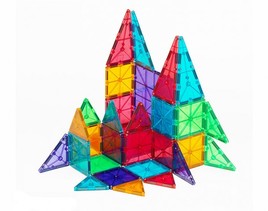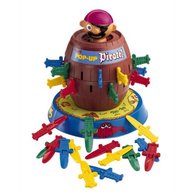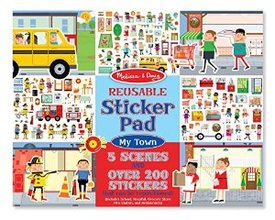It’s time again for our monthly segment: Favorite Toys Without Batteries! As we talked about here and here, we love toys without batteries. Below is The Speech Space’s April list of great toys that don’t make noise, so that you can get your child talking more while you play!

Magna-Tiles: These are a HUGE hit with kids. We are always surprised at the endurance children have with Magna-Tiles. For younger children, we tend to like the Magformers a little more, as they are easier to grip and the magnets seem to hold a little stronger. You can work on having your child describe the shape, color, size and/or number of the Magna-Tiles they want to use, sort the tiles by these same attributes (i.e., color, shape, size, number) or describe/talk about what they want to build. You can also make something and give your child clues (e.g., “It’s big and astronauts fly it to space”–a spaceship) so they can guess what you made!

Pop-up Pirate: Anything that pops out and surprises kids is sure to be a hit. This game is great to work on following directions, prepositions (i.e., location), and attributes attributes. You can hide the swords in various locations and then have your child go find them by giving directions (e.g., “Find the blue sword that is under the chair.”). This is also an easy game to incorporate simple 2 step directions (e.g., “Get the red sword before you get the green sword.”). We always modify things for our kids when needed, so feel free to do the same! You can limit the number of swords you put out to make it easier for your child. You can also work on increasing your child’s expressive language with this game. Have your child hide the swords and then give you the directions. Make sure your child is using attributes and prepositions in their directions (e.g., “Get the red sword.”, “Get the sword next to the chair.”, “Get 2 blue swords that are on the table.”). If your child is working on a specific sound, you can have them produce the sound or a word with that particular sound for every sword they put into the pirate’s barrel (e.g., if they are working on their V sound for every sword they have to say a word with a V in it).
What’s in Ned’s Head: Ned has some really weird (and really gross!) things in his head that you need to get out. Along with all the items in Ned’s head, there are matching picture cards which you can use to describe the objects your child needs to get out. Or you and your child can take turns describing which items you have to get out of his head. When making descriptions make sure to use attributes (i.e., color, shape, size, number), category (i.e., what group does the item belong to), function (i.e., what does the item do or what do we do with the item) and location (where would you find or see the item); these concepts help build your child’s vocabulary and language organization skills. All of our kids think this game is hilarious (especially when we feign not wanting to pull out the things they describe because they are “so gross!” or “so scary!”). You can even talk about the items and compare/contrast them (e.g., which one is your favorite, which one is the weirdest or grossest, why? etc)– just make it fun and silly and your child will enjoy it!

Picture Scenes (reusable stickers and magnets): These have been around for ages and continue to be a great way to work on a variety of language concepts. Most of these ‘scenes’ do a great job of targeting vocabulary in a particular context, such as a jungle or the beach, which is great for increasing your child’s use of specific vocabulary. When using these picture scenes, make sure that you withhold the stickers or magnets and have your child use correct vocabulary to request which stick or magnet they want! You can also give your child directions to help work on their understanding of prepositions and locations (e.g., “Put the shark under the big ship.”).
These are just a few more our favorite toys without batteries. If you missed our previous segments, you can see them here and here! Check back on The Speech Space blog for other fun ideas, toys and games you can do with your child to help increase their communication development.
And as always, if you have questions or concerns about your child’s development, contact us at The Speech Space! We offer free screenings, which take approximately 30 minutes, and can help identify potential problems.
